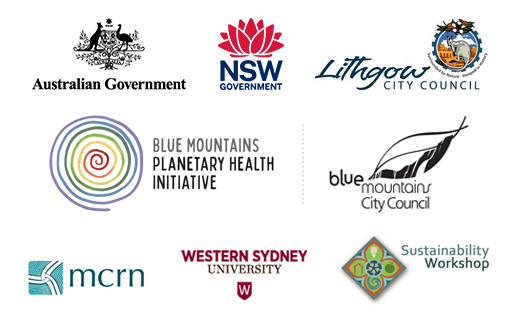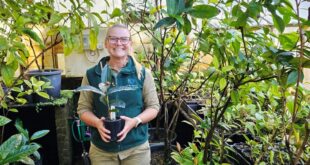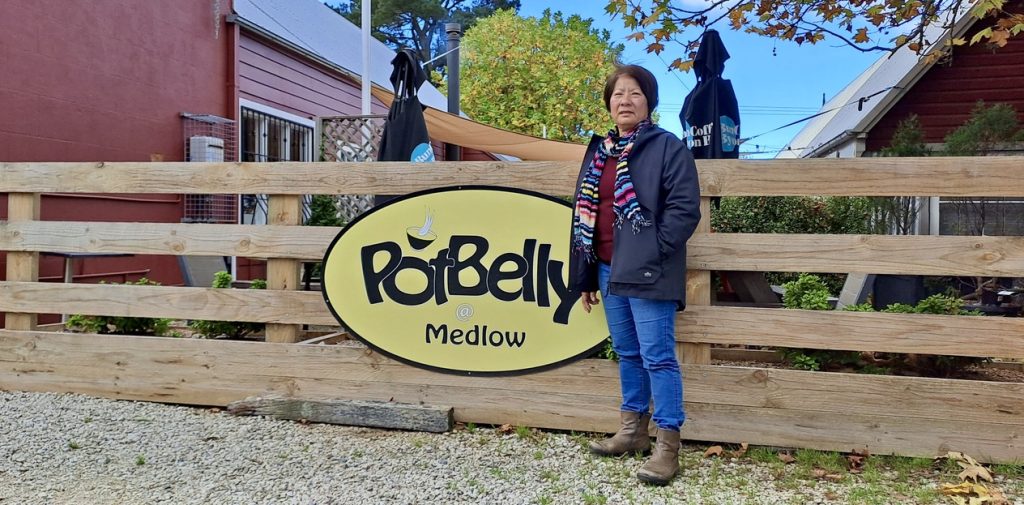
Carlene Martin outside the Potbelly Café in Medlow Bath (Hamish Dunlop)
By Hamish Dunlop
Hamish Dunlop talks to Philip Sen, Community Development Manager (Bushfire Resilience) for Habitat for Humanity (Blue Mountains) and Carlene Martin, Vice President of the Medlow Bath Residents Association. They discuss how Habitat for Humanity is supplying the Medlow Bath community with CB radios and providing property services to vulnerable people to reduce risk during disasters.
CB radios to support HUFF facilitators
During a disaster, being able to communicate is critical. Knowing who your neighbours are and what they need during a disaster can mean the difference between life and death. HUFF (Heads Up For Fire or Any Emergency) volunteers encourage people to connect with their neighbours. They facilitate the flow of information about risk reduction and support services before and during disasters. Habitat for Humanity is providing CB radios to HUFF volunteers to enable them to communicate with each other during a disaster.
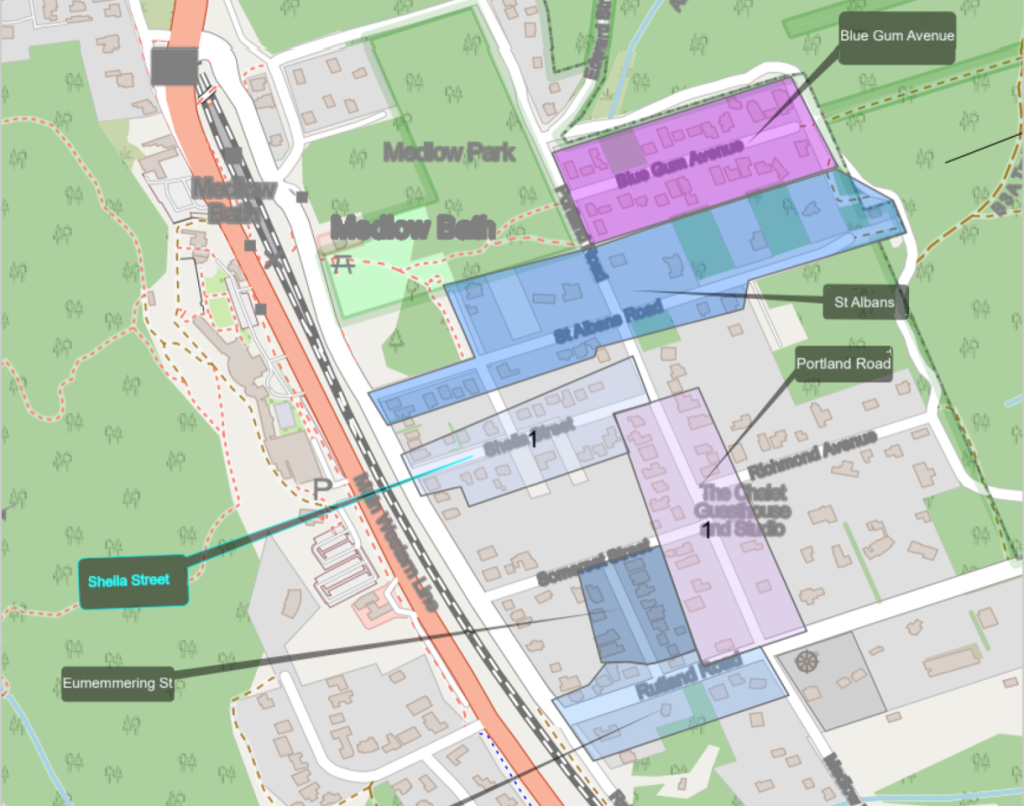
Medlow Bath HUFF areas (Habitat For Humanity)
Carlene Martin is the Vice President of the Medlow Bath Residents Association and a HUFF volunteer. She shares her street with a neighbour. “Some streets are just too big, so two or more of us act as HUFF volunteers. We need to get to know people so we can all be more resilient in case of bushfire and other emergencies. We support people to create bushfire plans and help them access services. The CB radios provided by Habitat for Humanity will be especially useful if mobile communications go down.”
The HUFF volunteers have booklets to record who needs help in their designated areas. In times of stress, this makes it easier to assess who might need support. Philip Sen, Community Development Manager (Bushfire Resilience) at Habitat for Humanity is looking at ways to enhance this capability. He is working with a team at the University of New South Wales School of Built Environment. They are developing a visual database, so HUFF volunteers can quickly see who needs support.
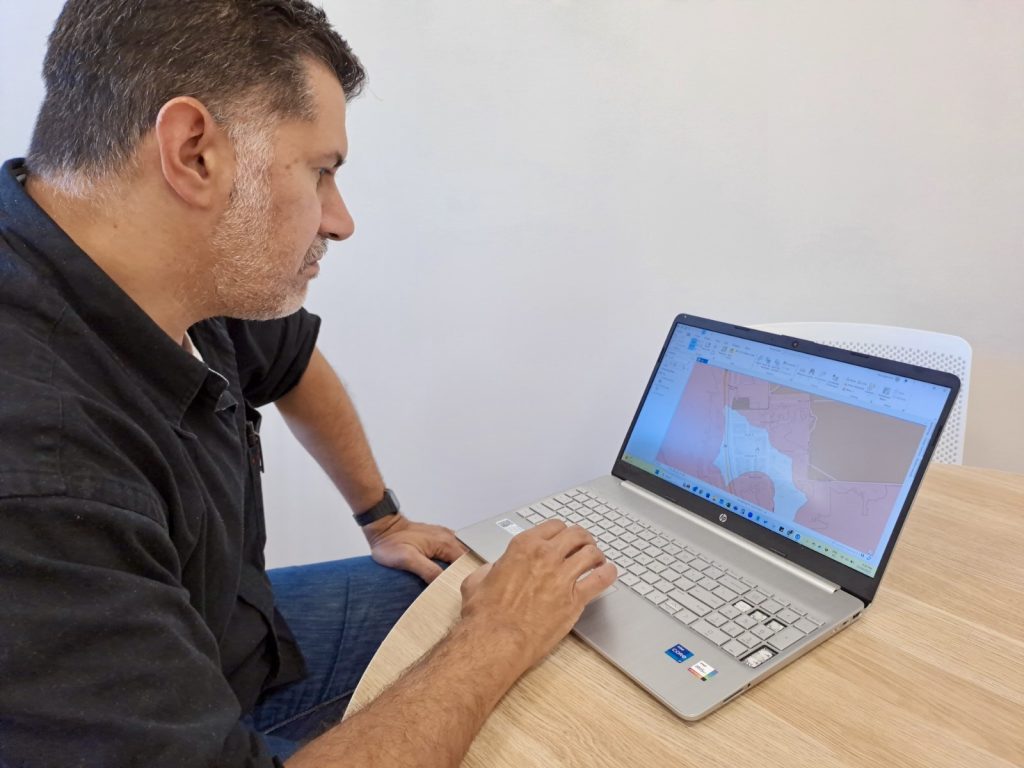
Philip Sen looking at the QGIS (Geographic Information System) (Hamish Dunlop). The system is in the development phase and there is currently no formal plan to implement it.
Bushfire risk reduction around homes
The Habitat Team is delivering property services across the Mountains, assisting vulnerable people to reduce the vegetation fuel load around their homes. People access the services through community-focused groups and organisations such as Beyond Blue Mountains, Springwood Neighbour Centre and the Medlow Bath Residents Association. They can also contact Philip directly (e: psen@habitat.org.au m: 0477 778 850).
The service is similar to the Rural Fire Services’ AIDER (Assist Infirm, Disabled and Elderly Residents) program, but it relies on volunteers who are supported by the Habitat Team. Since 2021, they have helped over 150 households reduce fuel loads and make property management more achievable. The Habitat Team is currently helping four to six households a week to reduce their bushfire risk.
Philip says the volunteers are central to the vegetation clearing activities. “People just come along for a day, but there are some regulars which is fantastic. Organisations volunteer with us too. Their staff assist with clearing and get a personal understanding of bushfire risk. Groups like this mean we can deal with larger properties more quickly. Anyone interested in volunteering can sign up on the Australian Habitat For Humanity website.”


Before and after shots from a property the Habitat Team and volunteers recently completed (Habitat For Humanity).
Philip is keen to point out that what the Habitat Team does is directly informed by the RFS guidelines about preparing your home. While clearing vegetation can reduce bushfire risk, trees and vegetation are also protected under legislation and planning policies. The Blue Mountains City Council provides information about what vegetation you can clear with and without a permit. Further information about bushfire preparedness can be found on the RFS plan-and-prepare page.
This story has been produced as part of a Bioregional Collaboration for Planetary Health and is supported by the Disaster Risk Reduction Fund (DRRF). The DRRF is jointly funded by the Australian and New South Wales governments.
